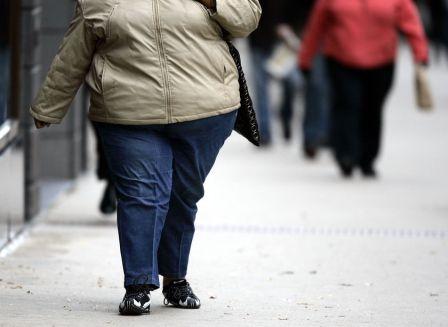November 30, 2010
Dr. Linda has a ball at lvac with Carol
November 3, 2010
Healthy Living Can Temper Breast Cancer Risk That Runs In Family
Some simple steps for healthier living appear to reduce a woman’s risk of developing breast cancer later in life, even if a close relative has already had the disease.
Moderate exercise five days or more each week is one ingredient for reducing breast cancer risk.
Researchers found women had a lower risk of breast cancer when they exercised regularly (20 minutes of moderate or vigorous intensity at least five days a week), drank modestly (7 or fewer drinks a week) and kept a normal body weight.
This isn’t the first study to support the notion that taking these steps can help stave off cancer. And the American Cancer Society already recommends women take these steps.
But the researchers also took a look at how the preventive measures worked when a woman’s mother or sister got breast cancer at age 45 or older. About 15 percent of post-menopausal women in the U.S. are in that boat.
The researchers found the good behavior lowered risks for women even when a close relative had already been diagnosed with breast cancer later in life. The effect was about the same as for women without the family history.
Still, the cancer risk remained higher for those with a family history — about 5.94 breast cancers for every 1,000 years lived by those women compared with 3.51 breast cancers for the healthy-living women without the family history.
The findings come from the experience of 87,000 women, ages 50-79 at the beginning of a study looking at breast cancer risks. They answered questions about their cancer risks and health behavior back in the 90s. The researchers checked on who got breast cancer and who didn’t through 2003.
The results were just published online by the journal Breast Cancer Research.
November 2, 2010
FDA Questions Diet Pill in Latest Setback for Weight-Loss Medicines
Here’s a little piece of friendly advice. If you’re waiting around for a diet pill to solve your weight problem, forget about it.
On Thursday, the Food and Drug Administration sent drugmaker Vivus what’s blandly called a “complete response letter,” detailing the shortcomings in the company’s application to sell a prescription diet pill called Qnexa.
The upshot is the agency isn’t going to approve Qnexa for a long time, if ever.
The once-a-day pill is a combination of phentermine, a stimulant and appetite suppressant, and topiramate, sold mainly to help control epilepsy seizures. While those drugs have risks, the side effects are pretty well understood at this point.
But are the risks worth the modest improvement in weight loss? That remains the big bugaboo for the field. It’s been tough for the makers of medicines to show they can help people lose just 5 percent of their weight.
Given the obesity epidemic in this country, millions of Americans might turn to a new diet pill for help. So even rare side effects could end up causing problems for a lot of people.
That’s one reason not to expect FDA — or doctors — to embrace any of these medicines anytime soon.
October 19, 2010
Spritz Away!
You are defeating the purpose when you fix yourself a low-calorie, healthy salad and then add a salad dressing full of calories, fats, and carbs.
Try eating your salad “au natural” or with a light virgin oil and vinegar dressing. There is a new product on the market that you may want to check out…
Try using Salad Spritzers!
There are several benefits, such as:
The next time you have a low-calorie, healthy salad, reach for the Spritzer!
October 18, 2010
Lose Weight at Work
Technology has eliminated as many as 2,000 of the calories that office workers used to burn each day, says James A. Levine, M.D., Ph.D., professor of medicine at the Mayo Clinic and author of Move a Little, Lose a Lot. No wonder the average American is 26 pounds heavier today than a generation ago. To start burning calories at work, Levine suggests you embrace these four work-based strategies.

trim that fat with these small adjustments to your day
1.) Meet on the Move
Instead of booking a conference room, ask colleagues to join you on a walk. Seriously. Just make sure the topic is relatively informal—brainstorming, not budgets, for example. Even an easy pace burns 10 times more calories than sitting for an hour—150 vs. a measly 15.
2.) Get on Your Feet
Stand up while talking or typing. (You may need to request a headphone or long cord, or a podium for your keyboard.)
3.) Find a Partner
A co-worker with similar fitness goals won’t push for fast-food breaks and will help you stay motivated. Maybe you can both buy pedometers and see who gets in the most steps each day. If you have iPhones, there’s a free app called Walk ‘n Play that tracks your movements and pits you against a friend or a simulator.
4.) Tackle Takeout
If you eat with your co-workers, offer to order lunch for the group. That way, you’ll control your options. In fact, you’re probably not the only one who would appreciate the healthier choices.
October 12, 2010
Vegetables v.s. Grains
Trying to decide what is the best type of carbohydrates to eat can be confusing. Are you better off eating vegetables or grains? The general consensus is both vegetables and whole grains are healthy but if your goal is to lose some weight, I would choose vegetables.
Now, I’m not saying that all whole grains are bad for you. If you are an endurance athlete spending hours training every day you might need to eat calorie dense foods like grains to keep you going. But if you are the average person interested in losing some weight or just keeping your weight under control, eating fewer grains and more vegetables could be a good idea for you.
The main problem with grains compared to vegetables is that for the same amount of calories, you get much more nutrition and food volume with vegetables. For example here is a comparison of 140 calories of whole wheat bread vs. 140 calories of broccoli:
Two Slices of Whole Wheat Bread
- 140 calories
- 1 gram fat
- 300 mg sodium
- 4 grams fiber
- 6 grams protein
- 24 grams carbohydrates
- 2 grams sugar
- 8% of your daily calcium
- 8% of your daily iron
- 12% Thiamin
- 12% Niacin
- 12% Folic Acid
- 4% riboflavin
4.5 Cups of Broccoli:
- 139 calories
- 1 gram fat
- 135 mg sodium
- 9 grams fiber
- 27 grams carbohydrates
- 9 sugars
- 13.5 grams protein
- 49.5% of your daily Vitamin A
- 607% of your daily Vitamin C
- 18% of your daily calcium
- 18% of your daily iron
- 18% Thiamin
- 13.5% Niacin
- 27% riboflavin
- 522% Vitamin K
When you look at the numbers, a vegetable like broccoli is far more superior than whole grain bread in its nutritional content based on calories. In general, vegetables give you the most amount of nutrition for the least amount of calories. In addition, broccoli is even higher in protein and lower in sodium.
When you are looking to eliminate calories from your diet to lose weight, try to pick foods that are calorie dense with the least amount of nutrition. Unfortunately grains can fall into this category. Just think you could eat 4.5 cups of broccoli that is loaded with nutrition or two slices of bread. What you should do is skip the bread and just eat two cups of broccoli and you just eliminated over 70 calories from your diet and ingested more nutrition then the 140 calories dense bread.
This also holds true for most vegetables. They will beat out grains almost every time. I know conventional wisdom keeps telling you to eat multiple servings of whole grains every day but eating too many grains can get you into trouble in your quest to control your weight.
If you want to look into whether grains are really healthy for you at all, check out this article by Mark Sisson titled Why Grains are Unhealthy.
Try reducing or eliminating the amount of grains in your diet for just two weeks and let me know how much weight you have lost and how much better you feel.
Article Courtesy of Mike Cola, Fitness Contrarian
October 11, 2010
Number of fat people in US to grow, report says
PARIS — Citizens of the world’s richest countries are getting fatter and fatter and the United States is leading the charge, an organization of leading economies said Thursday in its first ever obesity forecast.

image courtesy of the PaxArcana WP Blog
Three out of four Americans will be overweight or obese by 2020, and disease rates and health care spending will balloon, unless governments, individuals and industry cooperate on a comprehensive strategy to combat the epidemic, the study by the Organization for Economic Cooperation and Development said.
The Paris-based organization, which brings together 33 of the world’s leading economies, is better known for forecasting deficit and employment levels than for measuring waistlines. But the economic cost of excess weight — in health care, and in lives cut short and resources wasted — is a growing concern for many governments.
Franco Sassi, the OECD senior health economist who authored the report, blamed the usual suspects for the increase.
“Food is much cheaper than in the past, in particular food that is not particularly healthy, and people are changing their lifestyles, they have less time to prepare meals and are eating out more in restaurants,” said Sassi, a former London School of Economics lecturer who worked on the report for three years.
That plus the fact that people are much less physically active than in the past means that the ranks of the overweight have swelled to nearly 70 percent in the U.S. this year from well under 50 percent in 1980, according to the OECD.
In 10 years, a full 75 percent of Americans will be overweight, making it “the fattest country in the OECD,” the report said.
The projection seems in line with those made by some American researchers. About 86 percent of U.S. adults would be overweight or obese by 2030 if current trends continue, according to a study led by a Johns Hopkins University researcher and published in 2008 in the journal Obesity.
However, the most recent findings by U.S. government scientists indicate the obesity epidemic may be leveling off, with roughly two-thirds of adults overweight and holding steady in the last few years.
Meanwhile, the same factors driving the epidemic in the U.S. are also at work in other wealthy and developing countries, Sassi said. “There is a frightening increase in the epidemic,” Sassi said, “We’ve not reached the plateau yet.”
The lifespan of an obese person is up to 8-10 years shorter than that of a normal-weight person, the OECD said, the same loss of lifespan incurred by smoking.
In the U.S. the cost in dollars of obesity, including higher health care spending and lost production, is already equivalent to 1 percent of the country’s total gross domestic product, the report said. That compares to half a percent in other OECD countries, Sassi said.
These costs could rise two- or threefold over the coming years, the OECD said, citing another study that forecast obesity and overweight-related health care costs would rise 70 percent by 2015 and could be 2.4 times higher than the current level in 2025.
The OECD found that rates of obesity, defined as a body mass index above 30, show a wide variation across its member countries, ranging from as little as 3-4 percent of the population in Japan and Korea to around one-third in the U.S. and Mexico.
“However, rates are also increasing in these countries,” the OECD said. Outside the OECD, obesity rates are rising at similarly fast rates in countries such as Brazil, China, India and Russia.
The OECD advises governments on economic growth, social development and financial stability.
By GREG KELLER (AP) – Sep 23, 2010
October 1, 2010
When I think Stretch… I think TAFFY!!
Wow, do you remember the song “Rubber band man”?!
Before stretching, take a few minutes to warm up, as stretching cold muscles may increase your chances for injury. Sometimes even a super busy coach like me can be tempted to skip warming up and cooling down, but that’s when it’s time to get creative. If you walk to a fitness facility, use the trip there and back to warm up and cool down.

photo courtesy of pink-apron.com
Begin with a simple, low-intensity warm-up, such as easy walking while swinging the arms in a wide circle. Spend at least five minutes warming up prior to stretching. The general recommendation for people starting an exercise program is to perform gentle, dynamic-type stretches before a workout and static stretches after exercise. But jumping into a workout without preparing your body can actually lead to setbacks, like muscle strain or even injury. Remember, the time you spend preparing for exercise and cooling down afterward may be as important as the exercise itself. Give your body the help and time it needs to adjust to the demands of your workout.
September 30, 2010
Outlast Your Cravings

photo & post courtesy of Men's Health blog
Turns out, talking to yourself isn’t so crazy after all…
That voice in your head can help you control your cravings, say researchers at the University of Toronto.
“We give ourselves messages all the time with the intent of controlling ourselves–whether that’s telling ourselves to keep running when we’re tired, to stop eating even though we want one more slice of cake, or to refrain from blowing up on someone in an argument,” Alexa Tullett, Ph.D., candidate and lead author on the study, said in a press release.
With that in mind, Tullett and her colleagues put her theory to the test. She discovered that when people who weren’t able to talk to themselves acted more impulsively and made more errors.
The likely reason: The study participants weren’t allowed to talk to themselves, which hindered their focus.
Talking to yourself can subconsciously cause you to think of other reasons why you should resist the impulse, say the study authors. Take, for example, the person who’s trying to resist a piece of cake. Telling themselves not to eat it can trigger their minds to think of the reasons why they shouldn’t eat it—like the fact that they’re on a diet.
Just remember this when you’re dining out with friends:
“Situations where we are constantly talking make it difficult or impossible to use the inner voice,” says Tullett. “[This] may have consequences for our self-control as a result. Being at a dinner party, for example, might result in us eating much more food (or drinking much more alcohol) than we would have if we were monitoring our actions.”
And this advice isn’t just for dieters: “Similarly, if you’re talking on the phone and your girlfriend is doing something annoying, you might not take the time to count to 10 and instead blow up at her,” she adds.
Next time you have to make a choice, let yourself do the talking.
By Quinn Thacker
Original Article: http://blogs.menshealth.com/health-headlines/outlast-your-cravings/2010/09/24
September 29, 2010
A reacquaintance…
The other day one of our former members came in. I’ll
call her “Betty” to protect her privacy. She admitted to me
that she’d gotten off track for quite a while, but we talked
and I was able to help her get re-focused and re-motivated.
She is so happy now that she has met most of her fitness
goals and feels great.
I told Betty that sometimes I feel like a pest and I fear that
I may care too much. But she told me that my concern
was what had finally gotten her to take action. That was
very encouraging.
But I realize sometimes things stand in our way of
being able to take advantage of offers that we may really
want. So what I would like to do is send you my weekly
fitness tip to help you, even though you can’t come in.
If something changes and you can take advantage of my
offer, please just give me a call so I can schedule it.
Your partner in health,
Carol Strom
Founder




